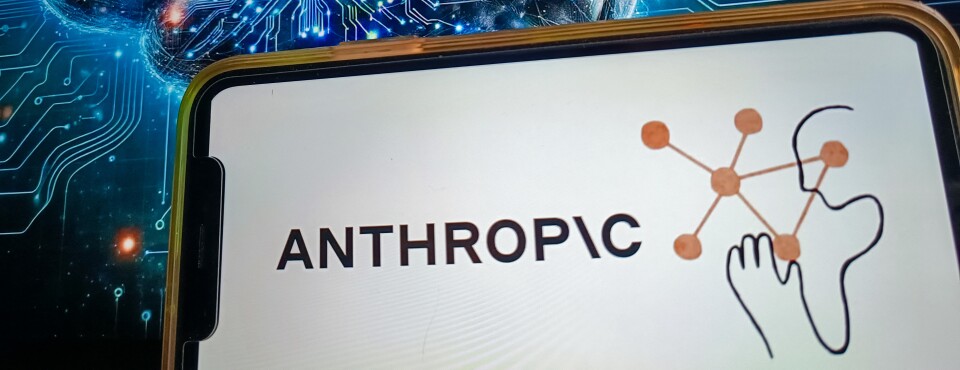

Le Top 20 des forums
Zerosquare (./586) :En fait, c'est simple : si l'investisseur est Softbank, tu prends plus des pincettes, mais des gros rondins de bois de séquoias abattus à Yellowstone.
Et du côté des investisseurs, la rationalité est loin d'être la norme (Theranos était un très bon exemple).
Zerosquare (./600) :
New Rowhammer attack silently corrupts AI models on GDDR6 Nvidia cards — 'GPUHammer' attack drops AI accuracy from 80% to 0.1% on RTX A6000
Tom's Hardware
The team behind the discovery, from the University of Toronto, showed how the attack could drop an AI model’s accuracy from 80% to under 1%—just by flipping a single bit in memory. It’s not just theoretical either, as they ran it on a real NVIDIA RTX A6000, using a technique that repeatedly hammers memory cells until one nearby flips, messing with whatever’s stored there.
/* gb_ppu.h -------------------------------------------------- */
#ifndef GB_PPU_H
#define GB_PPU_H
#include <stdint.h>
#define LCD_W 160
#define LCD_H 144
#define VRAM_SZ 8192
#define OAM_SZ 160
typedef struct {
uint8_t vram[VRAM_SZ]; /* 0x8000-0x9FFF shadow */
uint8_t oam[OAM_SZ];
uint8_t lcdc; /* 0xFF40 */
uint8_t scy, scx; /* 0xFF42-0xFF43 */
uint8_t wy, wx; /* 0xFF4A-0xFF4B */
uint8_t bgp, obp0, obp1;
} gb_ppu_t;
void ppu_init(void);
void ppu_line(uint8_t ly);
void ppu_copy_fb(const uint16_t *dst);
#endif/* gb_ppu.c -------------------------------------------------- */
#include "gb_ppu.h"
static uint16_t fb[LCD_W*LCD_H] __attribute__((section(".noinit")));
static const uint16_t dmg_pal[4] = {0xFFFF,0xADD6,0x528A,0x0000};
static inline uint16_t dmg_rgb(uint8_t idx,uint8_t pal){
return dmg_pal[(pal>>(idx*2))&3];
}
static inline void tile_line(uint8_t lo,uint8_t hi,uint16_t *out,const uint16_t *col){
for(int i=0;i<8;i++){
uint8_t bit=7-i,idx=((lo>>bit)&1)|(((hi>>bit)&1)<<1);
out[i]=col[idx];
}
}
void ppu_line(uint8_t ly){
gb_ppu_t *p=(gb_ppu_t*)0x20004B00;
uint16_t *line=&fb[ly*LCD_W];
uint8_t lcdc=p->lcdc,scy=p->scy,scx=p->scx,wy=p->wy,wx=p->wx-7;
/* BG / WINDOW */
if(lcdc&1){
uint16_t map_base=(lcdc&8)?0x1C00:0x1800;
uint16_t tile_base=(lcdc&0x10)?0x0000:0x0800;
for(int px=0;px<LCD_W;px++){
uint8_t y=ly+scy,x=px+scx;
if((lcdc&0x20)&&ly>=wy&&px>=wx){ y=ly-wy;x=px-wx;map_base=(lcdc&0x40)?0x1C00:0x1800; }
uint8_t tile=p->vram[map_base+((y>>3)*32)+(x>>3)];
if(!(lcdc&0x10)) tile+=128;
uint16_t addr=tile*16+((y&7)<<1);
uint8_t lo=p->vram[addr],hi=p->vram[addr+1];
uint8_t idx=((lo>>(7-(x&7)))&1)|(((hi>>(7-(x&7)))&1)<<1);
line[px]=dmg_rgb(idx,p->bgp);
}
}else{
for(int i=0;i<LCD_W;i++) line[i]=dmg_pal[0];
}
/* SPRITES */
if(lcdc&2){
uint8_t h=(lcdc&4)?16:8;
for(int n=39;n>=0;n--){
uint8_t *o=&p->oam[n*4];
int8_t oy=o[0]-16,ox=o[1]-8;
if(ly<oy||ly>=oy+h||ox<-7||ox>=LCD_W) continue;
uint8_t tile=o[2],flags=o[3];
uint8_t line_in=ly-oy;
if(flags&0x40) line_in=h-1-line_in;
uint16_t addr=(tile&((h==16)?0xFE:0xFF))*16+(line_in&7)*2;
uint8_t lo=p->vram[0x8000+addr],hi=p->vram[0x8000+addr+1];
uint16_t pal[4]={0,0,
dmg_rgb(1,(flags&0x10)?p->obp1:p->obp0),
dmg_rgb(3,(flags&0x10)?p->obp1:p->obp0)};
for(int x=0;x<8;x++){
int px=ox+((flags&0x20)?x:7-x);
if(px<0||px>=LCD_W) continue;
uint8_t bit=(flags&0x20)?7-x:x;
uint8_t idx=((lo>>bit)&1)|(((hi>>bit)&1)<<1);
if(idx && (!(flags&0x80)||line[px]==dmg_pal[0])) line[px]=pal[idx];
}
}
}
}
void ppu_copy_fb(const uint16_t *dst){ /* SPI DMA */ }
void ppu_init(void){}
Robert F. Kennedy Jr., the Secretary of Health and Human Services, has made a big push to get agencies like the Food and Drug Administration to use generative artificial intelligence tools. In fact, Kennedy recently told Tucker Carlson that AI will soon be used to approve new drugs “very, very quickly.” But a new report from CNN confirms all our worst fears. Elsa, the FDA’s AI tool, is spitting out fake studies.
CNN spoke with six current and former employees at the FDA, three of whom have used Elsa for work that they described as helpful, like creating meeting notes and summaries. But three of those FDA employees told CNN that Elsa just makes up nonexistent studies, something commonly referred to in AI as “hallucinating.” The AI will also misrepresent research, according to these employees.
“Anything that you don’t have time to double-check is unreliable. It hallucinates confidently,” one unnamed FDA employee told CNN.

Microsoft has silently pushed an update back in April 2025 for Copilot Enterprise, enabling a live Python sandbox running Jupyter Notebook that can execute code in the backend. Well, that sounds like a terrific idea, let’s explore it for a bit!
It turns out to be easy to have it execute exactly the code we want to on the underlying system using Jupyter Notebook syntax %command.


 "
"‘Optional’ AI scribe is mandatory if you want to see the doctor
Pivot to AI
Australian AI ethics lawyer Kobi Leins took her child to a medical specialist. The specialist asked to use an AI transcription system for the appointment.
Leins had actually reviewed this particular system for privacy and security. She knew it was trash and didn’t want her kid’s data “anywhere near” this thing.
The AI turned out to be mandatory! According to the practice:The specialist’s “high workload and limited time” meant they were now “unable to perform timely assessments without the use of AI transcribing tools.”
The appointment was cancelled and Leins’ deposit was refunded.


MIT report: 95% of generative AI pilots at companies are failing
Fortune
But for 95% of companies in the dataset, generative AI implementation is falling short. The core issue? Not the quality of the AI models, but the “learning gap” for both tools and organizations. While executives often blame regulation or model performance, MIT’s research points to flawed enterprise integration. Generic tools like ChatGPT excel for individuals because of their flexibility, but they stall in enterprise use since they don’t learn from or adapt to workflows, Challapally explained.
The data also reveals a misalignment in resource allocation. More than half of generative AI budgets are devoted to sales and marketing tools, yet MIT found the biggest ROI in back-office automation—eliminating business process outsourcing, cutting external agency costs, and streamlining operations.
Participants were asked to record the time taken for each task with M365 Copilot compared to colleagues not involved in the trial. The assessment report adds: "Observed task sessions showed that M365 Copilot users produced summaries of reports and wrote emails faster and to a higher quality and accuracy than non-users. Time savings observed for writing emails were extremely small.
"However, M365 Copilot users completed Excel data analysis more slowly and to a worse quality and accuracy than non-users, conflicting time savings reported in the diary study for data analysis.
"PowerPoint slides [were] over 7 minutes faster on average, but to a worse quality and accuracy than non-users." This means corrective action was required.
Zerosquare (./525) :
Pas encore regardé la vidéo, mais :
...j'ai parcouru les commentaires, et l'argument a l'air intéressant :
- pour les images et la musique, les AI génératrices sont entraînées avec du contenu qui est majoritairement compressé avec pertes (JPEG, MP3)
- comme la stratégie générale consiste à maximiser la quantité de données utilisées pour l'entraînement, indépendamment de leur qualité, une bonne partie des données contiennent des artefacts de compression non négligeables
- mais les modèles ne font pas la différence entre un signal utile et un artefact, donc "apprennent" à générer des pseudo-artefacts en même temps qu'ils apprennent à générer du signal
Conséquences :
- ce qui sort de ces modèles contient déjà des pseudo-artefacts, même si la sortie n'a jamais été compressée (c'est déjà embêtant)
- mais surtout, ces pseudo-artefacts sont différentiables de ceux qui sont générés par une compression ordinaire, donc c'est un moyen d'identifier les images et musiques générées par AI
- et si les futurs modèles sont (involontairement) entraînés avec la sortie des modèles précédents, ça ne fera qu'accentuer davantage le phénomène
Je trouve ça très intéressant, et rétrospectivement c'est tout-à-fait logique, mais c'est une impasse des méthodes actuelles.
(Après, si j'en crois le titre, il utilise une AI comme détecteur, donc on aura droit à la course aux armements habituelle : ça sera utilisé comme contrainte pour l'entraînement des futurs modèles de façon à passer sous le radar, etc.)
Zerosquare (./620) :The Software Engineers Paid to Fix Vibe Coded Messes404 MediaLinkedin has been joking about “vibe coding cleanup specialists,” but it’s actually a growing profession.
